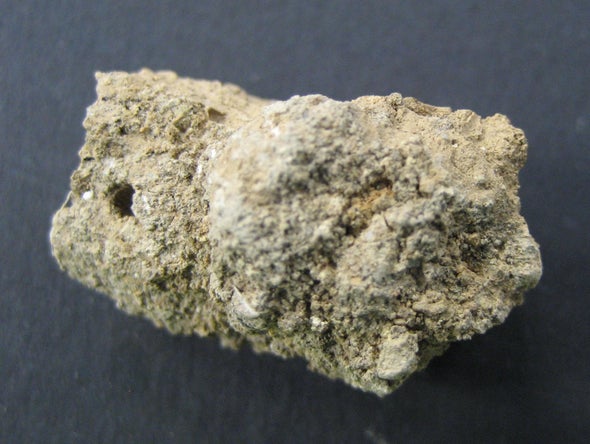(单词翻译:单击)
听力文本
This is Scientific American's 60-second Science, I'm Christopher Intagliata.
For a long time, archaeologists have dug for the shiny stuff, the sorts of artifacts that belong in museums. "They like pots and jewelry and gold and stuff like that."
Piers Mitchell, a biological anthropologist at the University of Cambridge. Mitchell spends his time looking for something decidedly different from such handmade relics. The thing he seeks? "A preserved piece of human feces."
Coprolites, as they're called, are dried or mineralized pieces of poop. And Mitchell and his team found some prime specimens in a trash heap at the ancient settlement of Çatalhöyük in modern-day Turkey, which dates from 6000 to 7000 B.C.
Mitchell's team ground up the poop samples with a mortar and pestle, then dissolved them and used microsieves to filter out particles of various sizes. The presence of certain molecules tipped them off that it was indeed human poop.

And in two of the samples they found the intact eggs of whipworm, an intestinal parasite that is far more likely to flourish in settlements than among people who poop and then move along to a new location. The discovery gives us a glimpse of how human health may have changed as hunter-gatherers started to adopt a stationary, agricultural lifestyle.
"It's only by looking at these earliest villages and towns that were set up in the Middle East that we can really start to understand that when humans change their lifestyle to a different way of getting food, how it can increase or decrease their risk of getting different kinds of diseases."
The results are in the journal Antiquity.
The findings prove that ancient poop is flush ... with details about past civilizations.
Thanks for listening for Scientific American — 60-Second Science. I'm Christopher Intagliata.
参考译文
这里是科学美国人——60秒科学系列,我是克里斯托弗·因塔格里塔。
很长时间以来,考古学家一直在挖掘闪亮的东西,就是要放在博物馆的那种手工艺品。“他们喜欢陶罐、珠宝、黄金之类的东西。”
剑桥大学的生物人类学家皮尔斯·米切尔说到。米切尔花时间寻找与这些手工文物截然不同的东西。他在寻找什么?“一块保存完好的人类粪便。”
粪化石——顾名思义,就是干燥或矿化的粪便块。米切尔及其团队在恰塔霍裕克古代定居点的垃圾堆中发现了一些主要标本,该定居点位于如今的土耳其境内,年代可追溯至公元前6000至7000年前。
米切尔的团队用研钵和杵研杵磨碎粪便样本,之后将它们溶解,并用微过滤器过滤出不同大小的颗粒。某些分子的存在提示他们这确实是人类的粪便。
在其中两份样本中,他们发现了鞭虫的完整卵,鞭虫是一种肠道寄生虫,比起在排便后转移到新地点者的体内,它更有可能在定居点大量繁殖。这一发现使我们得以一瞥狩猎采集者开始适应固定的农业生活方式后,人类健康如何随之改变。
“只有通过观察这些建立在中东地区的最早的村落和城镇,我们才能真正开始理解人类何时改变了自已的生活方式,转变为另一种捕食方式,理解这如何增加或降低患不同种类疾病的风险。”
研究结果发表在《古物》期刊上。
研究结果证明,古代粪便中充满了古代文明的细节。
谢谢大家收听科学美国人——60秒科学。我是克里斯托弗·因塔利亚塔。
译文为可可英语翻译,未经授权请勿转载!
重点讲解
重点讲解:
1. look for 找;寻;
They look for foods that are low in calories.
他们要找低卡路里的食物。
2. grind up 磨碎;碾碎; 将…磨成粉;
He makes his own paint, grinding up the pigment with a little oil.
他就着几滴油磨了些颜料,自己制油彩。
3. tip sb. off 给…通风报信;暗中告知;
Greg tipped police off on his car phone about a suspect drunk driver.
格雷格用他的汽车电话向警方报告了一个有酒后驾驶嫌疑的司机。
4. set up 创建;建立;安排;组建;
Tents have been set up next to hospitals to handle the overflow.
医院旁搭起了帐篷以安置容纳不下的人员。


